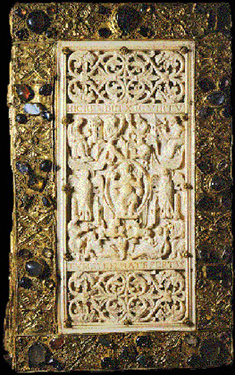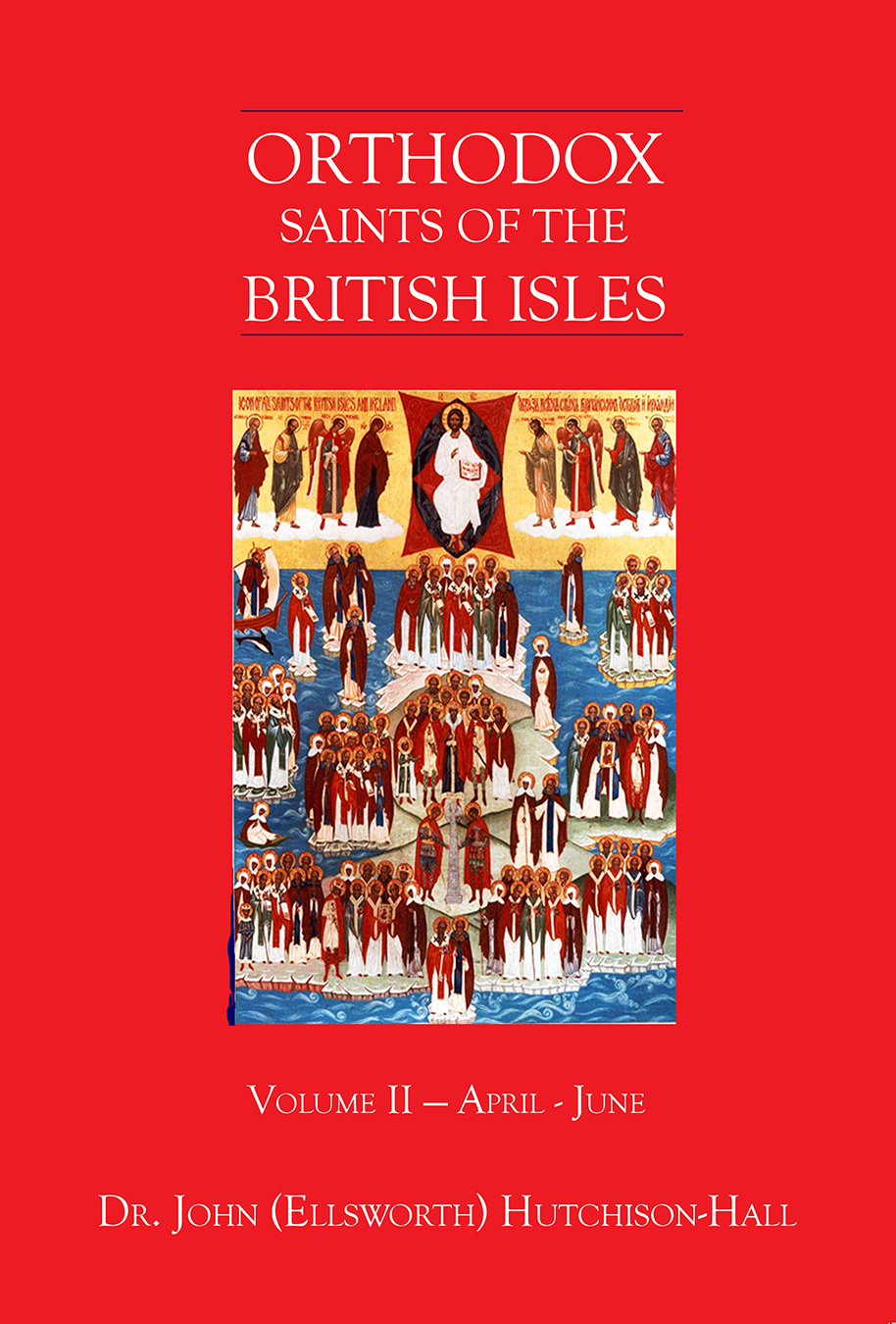
Orthodox Saints of the Pre-Schism
See of Rome
10th April (NS) — 28th March (OS) 2024
GUNDELINDIS (GUENDELINDIS), a daughter of the Duke of Alsace, France, and sister of SS. Attala (3rd December) and Eugenia (16th September). St. Gundelindis was raised by her aunt St. Odilia (13th December), whom she succeeded as Abbess of Niedermünster. She reposed circa 750.
GUNTHRAMMUS, a King of Orléans (r. 561–592), and son of King Chlothar I (r. 511–558) and Queen St. Clotilde (3rd June). King St. Gunthrammus was raised as a non-Christian. He divorced his wife, and had the court physician murdered for failing to cure his ex-wife. Later King St. Gunthrammus became a Christian, and his conscience was so full of guilt for his earlier life that he dedicated the rest of his life and fortune to the Church and helping those in need particularly in time of famine and plague. King St. Gunthrammus reposed in 592, and was acclaimed a saint by his subjects shortly thereafter.
ROGATUS, SUCCESSUS, and COMPANIONS, (Date Unknown), a group of eighteen martyrs in one of the early persecutions in North Africa. Beyond their listing in various martyrologies, no record of their lives is extant.

A piece of the ivory cover of the Evangelium longum, engraved circa 890. It is considered one of the library's book binding masterpieces.
St. Gallen Abbey Library
SIXTUS (XYSTUS) III, forty-fourth Pope of Rome from 432 until his repose in 440. St. Sixtus maintained extensive correspondence with St. Augustine of Hippo (28th August), restored several basilicas in Rome, including Saint Peter’s and Saint John Lateran, and defended the Church against the heresies of Nestorianism and Pelagianism.
SPES, an Abbot of the Abbey of St. Eutychius (Abbazia Sant'Eutizio) in Campi, Umbria, Italy. St. Spes was blind for forty years, but fifteen days (or years, sources are fairly divided on this) before his repose circa 513, his eyesight was miraculously restored.
TUTILO, an Irishman who educated at the Abbey of St. Gall in Switzerland, and then received monastic tonsure there. St. Tutilo was a gifted musician and artist. There are ivory tablets attributed to the saint, which form the cover of the Evangelium Longum at St. Gall, and his paintings can be found Konstanz, Metz, Saint Gall, and Mainz. St. Tutilo reposed circa 915.
Get your copy of Orthodox Saints of the British Isles today.
Available at Amazon or your favourite e-bookstore.
BEDE the YOUNGER, a high-ranking courtier in the Court of Charles II (the Bald), Emperor and King of France (r. 843–877). After decades of faithful service to the King, St. Bede left the world and received monastic tonsure at a monastery in Gavello, southwest of Venice (north-eastern Italy). Although he was offered a bishopric several times, St. Bede refused on the grounds that he was not worthy. St. Bede reposed in 883.
BEOCCA of CHERTSEY, ETHOR of CHERTSEY, and COMPANIONS, the sack of England, and in particular the monasteries, by the Danes claimed many lives including SS. Hedda, Theodore and Companions (9th April). To the number of martyrs, we must add SS. Beocca, Abbot; Ethor, priest-monk; and some ninety monks at Chertsey Abbey in Surrey in 869.
MACARIUS of ANTIOCH, an Archbishop of Antioch who resigned his See, and following a pilgrimage to the Holy Land, set off to enlighten pagans in the west. He travelled north through Dalmatia (south-west Croatia) and Bavaria (southern Germany), preaching the Gospel and earning a reputation as a wonderworker along the way. St. Macarius finally settled in Ghent in present-day Belgium at the Abbey of St. Bavo (Sint-Baafsabdij). Where he remained for the rest of his life, reposing in 1012.
MARTYRS of CARTHAGE, a group of fifty Christians during the Decian Persecution (250–251) who were tortured by imprisonment with snakes and scorpions, before being martyred by beheading in Carthage, Africa Proconsularis. Of these fifty martyrs only the names of these six are still known:
Africanus, Alessandro, Massimo, Pompeius, Terence, and Teodoro.
MARTYRS of OSTIA, a group of criminals who were baptised by Pope St. Alexander I (3rd May) during his imprisonment. They were martyred circa 115 by drowning after being taken to Ostia near Rome and put on board a boat which was then sunk at sea. Some sources list them as Martyrs of Rome.
PALLADIUS, an Abbot of the Abbey of St. Germanus of Auxerre (abbaye Saint-Germain d'Auxerre) in Auxerre, Burgundy (east-central France), St. Palladius went on to serve as Bishop of Auxerre, and was the founder of several monasteries. He reposed in 661.
Prior to the Schism the Patriarchate of Rome was Orthodox, and fully in communion with the Orthodox Church. As Saint John of Shanghai and San Francisco +1966 said “The West was Orthodox for a thousand years, and her venerable Liturgy is far older than any of her heresies”.
Details of British Saints excerpted from Orthodox Saints of the British Isles.
Details of continental saints from these sources.
In many cases there are several spelling versions of the names of saints from the British Isles. I use the Oxford Dictionary of National Biography version as the primary version with the more prevalent version in parenthesis e.g. Ceadda (Chad) of Lichfield.

